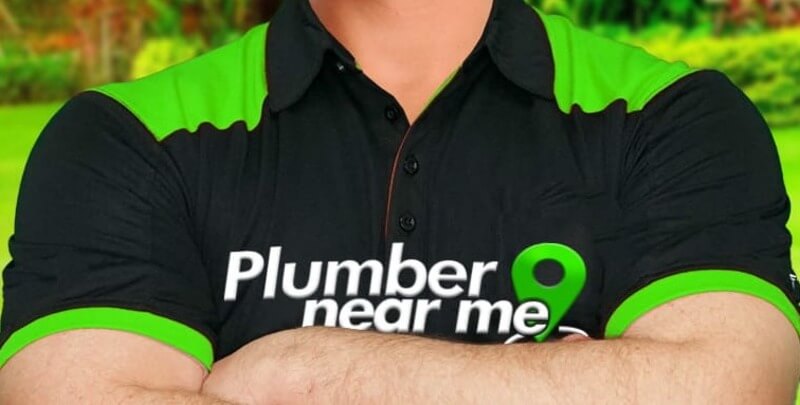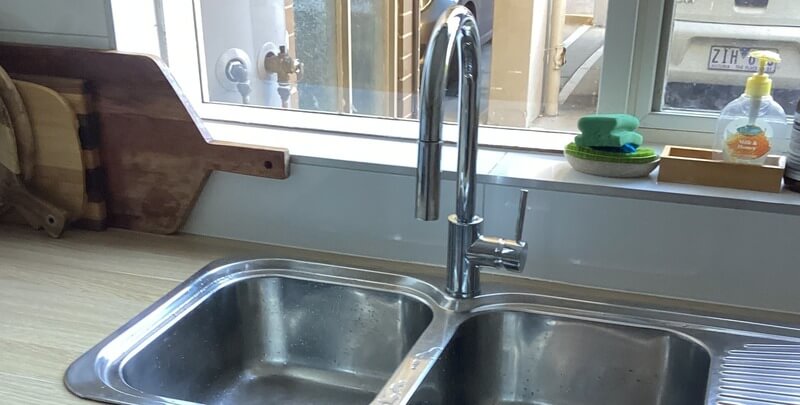
How to Fix a Leaking Tap
Dealing with a leaking tap can be frustrating and wasteful for your wallet. The constant drip-drip sound can drive anyone crazy, not to mention the water bill that keeps rising.
Did you know, if your leaking tap fills a 200mL glass in 15 minutes, it will waste 680 litres in a month and 8000 litres in a year?
If your tap leaks when it is turned off, it means the washer attached to the jumper valve needs replacing. In this article, we will guide you through the process of fixing that pesky leak.
We’ll cover everything from understanding the basics of tap leaks to providing step-by-step instructions for repairing different types of leaks. It could be your kitchen tap or your garden tap, it’s still costing your money.
With the right tools, materials, and a little know-how, you’ll be able to tackle this common household problem like a pro. However, leaking taps can be a sign of a much bigger plumbing problem. If the dripping persists, call a qualified plumber.
So, let’s roll up our sleeves and get ready to fix a leaking tap once and for all.
Understanding the Basics
Before we dive into fixing a leaking tap, it’s important to understand the basics. A leaking tap refers to a faucet or valve that is allowing water to escape even when it’s supposed to be closed.
This can lead to leaking water, higher bills and annoying drips that keep you up at night.
Tap leaks can have various causes, including worn-out washers, damaged O-rings, loose components, or faulty cartridges. It’s crucial to identify the source of the leak to determine the appropriate fix.
Ignoring a leak might seem tempting, but it can have consequences. Over time, a small leak can escalate into a bigger problem, causing water damage, mould growth, and even structural issues. It’s better to address the issue promptly to save yourself from costly repairs down the line.
In the next sections, we’ll cover the tools and materials you’ll need, as well as provide step-by-step instructions to fix different types of tap leaks.
By understanding the basics, you’ll be well-equipped to take on this DIY project and put an end to that nagging drip.
What Tools and Materials Do I Need?
Now that you understand the basics of tap leaks, let’s talk about the essential tools and materials you’ll need to fix that dripping tap. These tools and replacement parts should be available at a local hardware store.
The good news is that you don’t need a fancy toolbox to get the job done. Here are some must-have tools:
- Adjustable wrench: This versatile tool will help you loosen and tighten various components.
- Screwdriver: A set of Phillips and flathead screwdrivers will come in handy for removing screws.
- Pliers: Get a pair of adjustable pliers or needle nose pliers for gripping and turning nuts and bolts.
- Allen wrench: Depending on your tap type, you may need an Allen wrench to remove specific parts.
- Tap washer assortment: Have a collection of different-sized washers to ensure you have the right one for replacement.
In addition to the tools, gather the following materials:
- Washers: These small rubber or fibre discs are often the culprits behind dripping taps.
- O-rings: A rubber O-ring is used to seal certain components and prevent leaks.
- Replacement cartridges or valves: If your tap has a cartridge or jumper valve that needs replacing, make sure to have the appropriate replacement part.
By having these tools and materials ready, you’ll be prepared to tackle any tap leak. In the next sections, we’ll guide you through the step-by-step process of fixing different types of leaks, so you can finally bid farewell to that annoying drip and get your water flowing properly.

Diagnosing the Problem
Before you can fix a leaking tap, it’s essential to diagnose the problem accurately. This step will help you identify the source of the leak and determine the appropriate course of action.
Start by understanding the type of tap you have. Is it a compression tap, a ball tap, a cartridge tap, or a ceramic disc tap? Each type has different components and potential areas of leakage.
Next, locate the source of the leak. Is it coming from the spout, the base, or the handle? Carefully examine these areas for any signs of water seepage or drips.
Assess the severity of the leak. Is it a slow, occasional drip, or is the tap constantly leaking? Understanding the extent of the problem will help you prioritise the repair and gather the necessary materials.
Remember, diagnosing the problem correctly is crucial for effective repairs. In the upcoming sections, we’ll provide detailed instructions for fixing different types of leaks, ensuring that you can tackle the issue with confidence.
Fixing Different Types of Leaks
Now that you’ve diagnosed the problem with your leaking tap, it’s time to dive into fixing it. The specific repair method will depend on the type of leak you’re dealing with. Let’s explore the steps for fixing different types of tap leaks.
Repairing a Dripping Tap
If your tap is constantly dripping, it’s likely due to a faulty tap washer. Here’s what you can do:
- Shut off the water supply and make sure the remaining water has run out.
- Disassemble the body of the tap and locate the old washer.
- Remove the old rubber washer and replace it with a new washer of the same size.
- Reassemble the tap, turn the tap on and check for leaks.
Resolving a Leaking Tap Base
If water is leaking from the base of the tap, a worn-out O-ring or loose component could be the cause. Worn-out O-rings are a common problem.
Follow these steps:
- Turn off the water.
- Remove the handle and collar to access the O-ring.
- Replace the O-ring if it appears damaged or worn.
- Tighten any loose components or replace them if necessary.
- Reassemble the tap, turn on the water supply, and check for leaks.
Fixing a Leaking Tap Handle
If water is seeping around the handle, the handle mechanism may need adjustment or replacement. Here’s what to do:
- Shut off the water.
- Remove the handle and inspect the mechanism for damage.
- Adjust or replace the handle mechanism as needed.
- Lubricate the handle with plumber’s grease for smooth operation.
- Reassemble the tap, turn on the water, and check for leaks.
Dealing with a Leaky Tap Spout
Leaks from the tap spout often indicate worn-out cartridges or valves. Follow these steps:
- Turn off the water.
- Disassemble the tap to access the cartridges or valves.
- Replace the worn-out cartridges or valves with new ones.
- Reassemble the tap, turn the tap on and check for leaks.
Remember to follow the specific instructions for your tap type and have the necessary tools and materials ready. By following the above steps, you’ll be able to fix most taps and different types of leaks and bid farewell to that troublesome drip.

Additional Tips and Troubleshooting
While you now have the knowledge to fix leaking taps, here are some additional tips and troubleshooting suggestions to ensure a successful repair:
- Preventive measures: After fixing the leak, take preventive measures to avoid future issues. Regularly check and maintain your taps, replace tap washers periodically, and avoid over tightening handles to prevent unnecessary wear and tear.
- Dealing with persistent leaks: If you’ve followed the repair steps but the leak persists, there may be underlying issues requiring professional assistance. Consider contacting a licensed plumber who can identify and resolve more complex problems.
- Water pressure adjustment: High water pressure can contribute to tap leaks. Consider installing a pressure regulator or adjusting the pressure at your main water supply to reduce strain on the tap’s components.
- Regular maintenance: Make it a habit to inspect your taps periodically for any signs of leaks or wear. Early detection can save you from major repairs later on.
- Know when to call a plumber: While many tap repairs can be done on your own, there may be situations where professional help is necessary. If you’re unsure or uncomfortable with the repair process, it’s better to seek assistance from a qualified plumber.
Remember, safety should always be a priority. If you encounter any unexpected difficulties during the repair or have concerns about working with plumbing fixtures, don’t hesitate to consult a professional.
By following these additional tips and troubleshooting suggestions, you’ll not only fix the immediate leak but also ensure the long-term functionality of your tap.
Know Your Limitations
Congratulations! You’ve learned how to fix a leaky tap like a pro. By understanding the basics, gathering the right tools and materials, diagnosing the problem accurately, and following the appropriate repair steps, you can put an end to that pesky drip and save yourself from wasted water and higher bills.
Remember, addressing tap leaks promptly is essential to prevent further damage and potential costly repairs. With the knowledge and skills you’ve gained, you’ll be able to tackle future tap leaks with confidence.
However, always prioritise your safety and know your limitations. If you encounter complex issues or feel uncomfortable with the repair process, don’t hesitate to seek professional assistance.
Call a Qualified Plumber
If your tap is still leaking, it will more than likely need to be re-seated. A reseating kit can be purchased from any local hardware store.
Your state’s plumbing regulations should always be consulted before carrying out any unlicensed plumbing work. If you’re in the market for leaking tap repair, make Plumber Near Me your first call. We’ll fix your water flow.
At Plumber Near Me, we are your local experts, operating 24/7, every day of the year and we even aim to be at your door within the hour* for all your leaking tap needs and other plumbing problems. We also offer a range of flexible finance options** for eligible customers.
Please note: This information is provided for advice purposes only. Regulations differ from state to state, so please consult your local authorities or an industry professional before proceeding with any work. See our Terms & Conditions here.